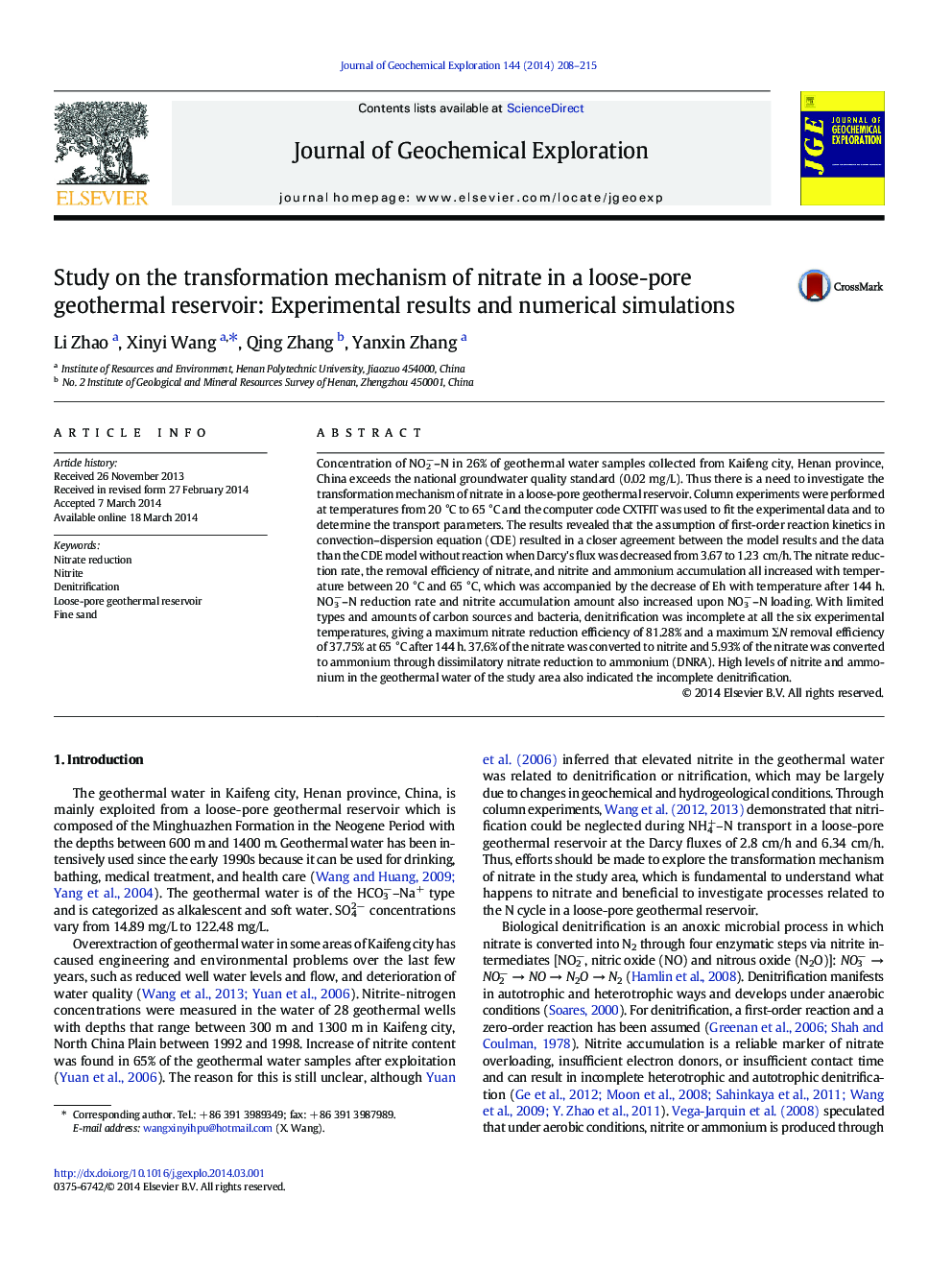| کد مقاله | کد نشریه | سال انتشار | مقاله انگلیسی | نسخه تمام متن |
|---|---|---|---|---|
| 4457267 | 1312600 | 2014 | 8 صفحه PDF | دانلود رایگان |
• High levels of nitrite and ammonium in the study area were confirmed.
• The NO3− reduction rate, NO2− and NH4+ accumulation increased with temperature.
• The first-order reaction assumption in CDE explained the nitrate transport well.
• 6.92% of the NO3− was converted to NH4+ at 60 °C without exogenous C source.
Concentration of NO2−–N in 26% of geothermal water samples collected from Kaifeng city, Henan province, China exceeds the national groundwater quality standard (0.02 mg/L). Thus there is a need to investigate the transformation mechanism of nitrate in a loose-pore geothermal reservoir. Column experiments were performed at temperatures from 20 °C to 65 °C and the computer code CXTFIT was used to fit the experimental data and to determine the transport parameters. The results revealed that the assumption of first-order reaction kinetics in convection–dispersion equation (CDE) resulted in a closer agreement between the model results and the data than the CDE model without reaction when Darcy's flux was decreased from 3.67 to 1.23 cm/h. The nitrate reduction rate, the removal efficiency of nitrate, and nitrite and ammonium accumulation all increased with temperature between 20 °C and 65 °C, which was accompanied by the decrease of Eh with temperature after 144 h. NO3−–N reduction rate and nitrite accumulation amount also increased upon NO3−–N loading. With limited types and amounts of carbon sources and bacteria, denitrification was incomplete at all the six experimental temperatures, giving a maximum nitrate reduction efficiency of 81.28% and a maximum ΣN removal efficiency of 37.75% at 65 °C after 144 h. 37.6% of the nitrate was converted to nitrite and 5.93% of the nitrate was converted to ammonium through dissimilatory nitrate reduction to ammonium (DNRA). High levels of nitrite and ammonium in the geothermal water of the study area also indicated the incomplete denitrification.
Journal: Journal of Geochemical Exploration - Volume 144, Part A, September 2014, Pages 208–215
